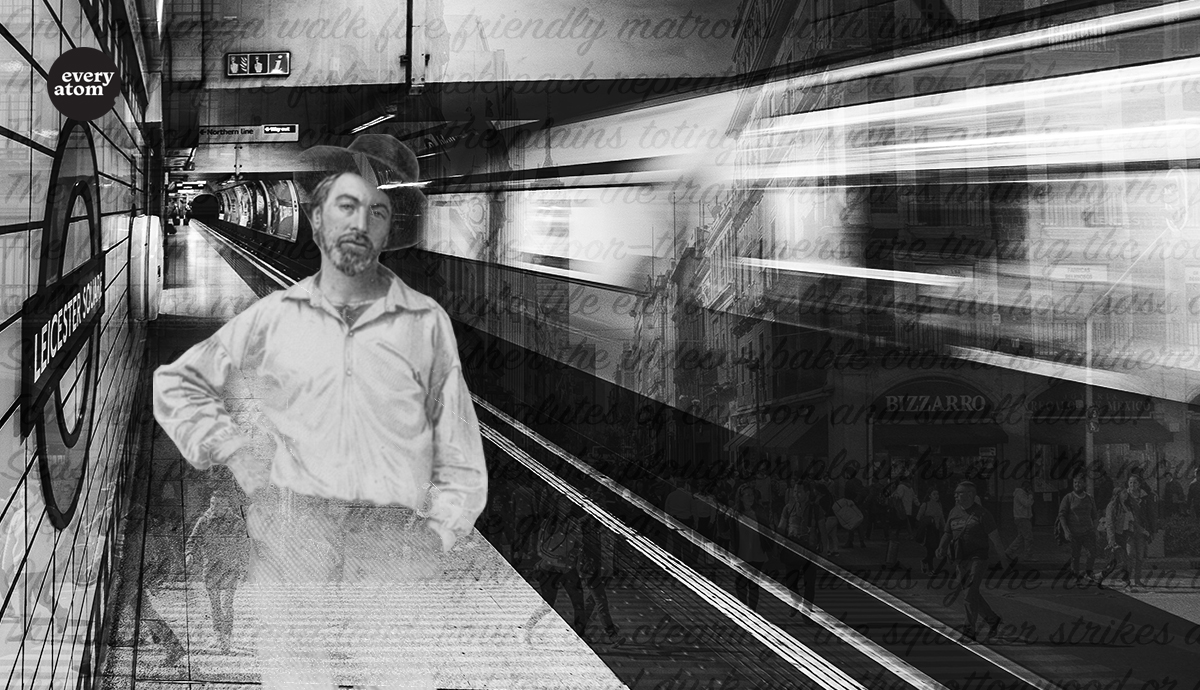Every Atom | No. 176
Introduction to Every Atom by project curator Brian Clements
Whitman famously loved lists. In the 1855 Leaves, Whitman lists and counter-lists people, places, and things that seem different from one another but which, he seems to suggest, should be considered together. While there is a certain power in placing disparate entities together, these lists also collapse crucial differences. In the list above, Whitman conflates public and private spaces, almost to the point of voyeurism; he obscures differences of class, race, gender, and age.
Perhaps the most egregious glossing over of differences is that for the enslaved population there was no such thing as public or private space, at least as we understand it. Slaves could only be in public under the yoke, literal or metaphorical, of someone else, and private space—if by that we mean a space where one can find solace and separation from the world—was in short supply for the enslaved.
In 1855, many (white) writers had yet to recognize that much labor is not free, and had yet to consider the fates of those without access to this free movement. But this is also the era of Frederick Douglass’s Narrative (published in 1845) in which Douglass reminds us over and over that his status in public space is highly fraught; at one point, he is beaten because whites will not work with African Americans in the same space. Furthermore, when Whitman was writing Leaves of Grass, Harriet Jacobs was writing Incidents in the Life of a Slave Girl, in which she describes her own forced private exile in various hiding places to avoid being discovered by her sexually abusive owner. As a journalist and an active participant in American culture, Whitman had access to this information—is it wrong, then, for us to see his blindness in these harmonious creation of lists?
Whitman does discuss slavery throughout his poem, sometimes in a way that we might now call virtue signaling. For example, on page 19 of the 1855 edition of Leaves, Whitman writes:
The runaway slave came to my house and stopped outside,
I heard his motions crackling the twigs of the woodpile
My house, the speaker says, with ease, because he has a place to call home, a place removed from the vicissitudes of public life. He then invites this slave (nameless--because names, to Whitman, reduce a subject’s universality) to stay with him while he recovers from his wounds. This slave is not so much a person as a catalogue himself, a “sweated body with bruised feet,” whose “revolving eyes” and “awkwardness” Whitman takes in as he takes in other people and other landscapes. He cleans this body and permits it to pass a week by his side, sitting with him at his table. All the while, Whitman emphasizes, using ellipses “... my firelock leaned in the corner.”
Are we meant to gasp at this beneficence, this shared trust? Are we meant to see Christ in Whitman’s ministration of this runaway slave? We are. And yet (despite this signaling of virtue) it is clear that Whitman’s speaker is doing something astonishing in this poem. He is offering this enslaved person a respite from the relentlessness of the public sphere, as he would do again when he cared for wounded soldiers in the Civil War.
A few lines later in the poem, we learn that the “runaway slave” has recuperated and “passed north.” He passes onward because he has no home with a woodpile, no firelock of his own. Whitman loves these passersby; he may care for them or loafe with them for a time but, soon, he too passes on, passes over. In the next lines, he describes twenty-eight men bathing on a beach. The runaway slave is forgotten.
In listing disparate places and lingering briefly on individuals, or groups as the Chattahoochee or Altamahaw above, Whitman makes the case for a universality of experience—his experience—that must have been comforting in the turbulent 1850s. The Civil War followed, ostensibly settling the matter of slavery and the union, but creating other fractures, especially when it came to the rights of African Americans, who were promised space—40 Acres and a Mule—but were delivered generations of pain and suffering.
Whitman’s universalism was seemingly contingent on his 1855 snapshot of an United States that could still separate slavery from civil rights, a perspective that became less tenable after the war. “After the Civil War,” Ed Folsom writes in “Erasing Race: The Lost Black Presence in Whitman’s Manuscripts,” (in Whitman Noir, ed. Ivy Wilson) “when slavery ceased to be the burning issue in the United States and was replaced by the question of civil rights for the newly freed blacks, Whitman’s racial attitudes are often painful to encounter” (Wilson 13). Whitman’s ideas did not evolve in a way that contemporary readers might like to see, in a way that could make us comfortable.
And, so, we are left with discomfort. We are left with attitudes that are painful to encounter. We are left with the knowledge that the Good Gray Poet cannot be applied like a balm to heal racial, spiritual, or other American wounds, as he too often is in introductory poetry classes, at least until recently. In the space of the classroom, we have to grapple with the complexities of his legacy, listing not only his deep empathy and broad vision but also his blinkered racial perspectives among his contradictory multitudes.
Recommended
Nor’easter
Post-Op Appointment With My Father
Cedar Valley Youth Poet Laureate | Fall 2024 Workshop








